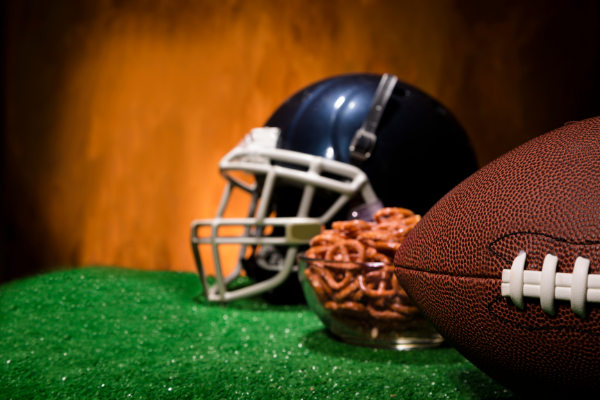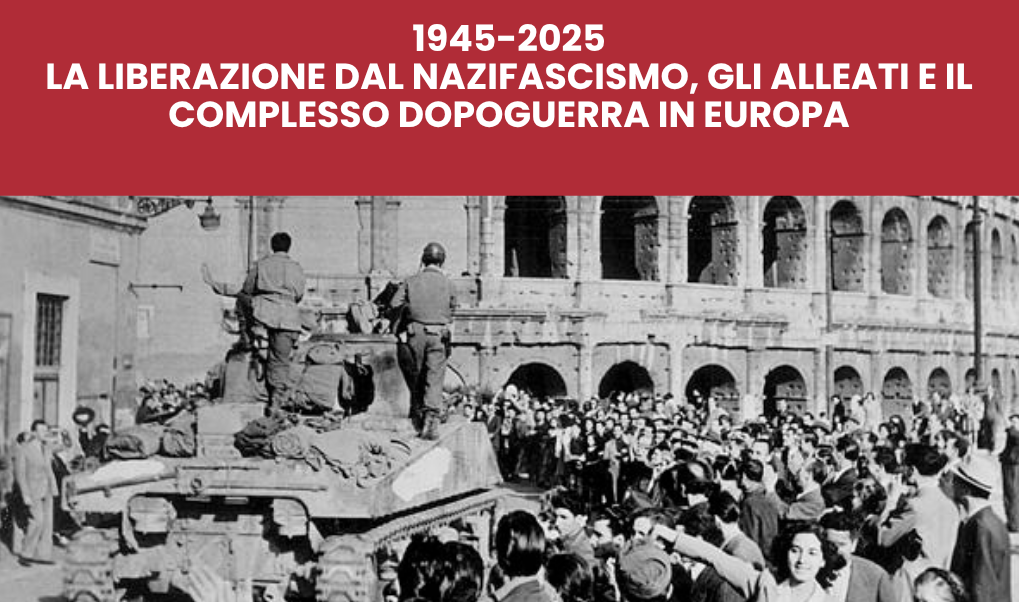DECONSTRUCTING THE SUPER BOWL 2021

Di Antonia Williams, Centro Studi Americani
The super bowl, in its fifty-four years, has always been more than just an athletic event for Americans. Besides the drama of the game, there are thematic narratives that reflect the moment in which the game is played. Those narratives include the sporting event itself, its commercial marketing, collateral entertainment and even political messaging.
This year’s super bowl was unique. The biggest annual sporting event in the united states kicked off amid a full-fledged and continuing pandemic, which has claimed more than 450,00 lives across the country. It also followed upon four turbulent political years in which the national football league, the consortium of teams that organize the football season, was an unwilling protagonist.
That meant it was a relatively somber event to match the national mood.
- THE GAME: TWO STARS TAKE CENTER STAGE
Like a theater production, every year brings out an important story line, usually involving key players.
This year, the narrative was clear. A contest between who the NFL’s recent past embodied in an aging player, and its future, embodied by a young upstart.
The key position was quarterback, who is the person who handles the ball most during the game and is key to the scoring.
The past was represented by tom brady, playing for the Tampa Bay Buccaneers, who started his tenth super bowl and has won six—more than any other player. He is also 43 years old, a methuselah among pro athletes of American any sort.
He was pitted against the up-and-coming star Patrick Mahomes, for the Kansas City Chiefs. Majomes is only 25 and has was going for his second super bowl title.
So there it was: the aging king against princely challenger. diva against ingenue.
Well, the old guy won. Brady and the Bucaneers beat Mahomes and the Chiefs. something for middle aged men to hold onto. The future will have to wait.
· FUN: HOW MUCH IS HEALTHY IN A PANDEMIC?
The super bowl is supposed to be fun for fans. The host city (this year, Tampa, Florida) usually holds two weeks of street festivities, concerts, and parties before the game.
But not this year.
Because of the coronavirus, the public festivities were canceled. The NFL allowed only 22,000 spectators into the city’s 66,000 seat stadium. This was the lowest attendance of any super bowl game; the previous low was the first Super Bowl in 1967 at the Los Angeles Coliseum with almost 62,000 fans.
Health officials tried to restrict fun at home, too. Maybe 100 million Americans watched the game on TV. Usually, house parties full of friends feature beer, junk food and plenty of jumping up and down on sofas. Bars are also filled with fans.
This year, Dr. Anthony fauci, the government’s highest-ranking infectious-diseases doctor, warned against parties or any other kind of crowded social gathering. “there will be other Superbowls,’ he intoned. Meanwhile, Tampa mayor jane castor ordered citizens to to wear masks outdoors during the super bowl weekend. In Florida, that hasn’t been a requirement.
In any event, the mayor’s and Fauci’s efforts went for naught. Thousands of maskless people filled bars where the game was shown on TV and many thousands more took to the streets, maskless, after the game to celebrate.
Whether all this becomes a ‘suer spreader event’ will be known in a few weeks.
- THE FANS: TRADING FOAM FINGERS FOR PPE
There was controversy about playing the football season and championship, giving that concert halls and theaters are still closed nationwide and many retail stores and workshops and even schools are still closed for fear of spreading the disease.
Some observers considered it reckless to play while others saw it as a source of inspirations, healing, unity and even a moment of fun.
In the end, justification came down to the need to take a break from Covid-19. Jim bell, a former executive producer at the nbc tv network, justified it thusly: “we’re hopefully all going to get a nice three-and-a-half-hour rest from covid and politics, which i think we can all use.”
The NFL was determined to show that it was following health regulations of mask wearing and social distancing. Along with the reduced attendance, groups of people were kept apart. The league also provided trinkets to fans, things like t-shirts and giant foam rubber fingers emblazoned with the name of your favorites team.
The NFL provided 7,500 healthcare workers free tickets to the game as gratitude for their work. Perhaps also to honor the health workers, the nfl gave everybody free personal protection kits that included mouth masks, disinfectant wipes and hand sanitizer.
Everyone had to wear a mask inside the stadium. “we want our fans to be safe,” NFL commissioner roger goodell said. “they need to be smart. They need to wear their ppe.”
And most did, except a few players on the sidelines and of course, when they were actually playing.
- ENTERTAINMENT: A LITTLE SUBDUED.
A thing called the halftime show takes place during a break halfway through the hour-long game. It is usually a spectacular of mass dancing and music, with flames and fireworks aplenty. Even fans are sometimes called to take the field.
Some people watch the game at the stadium and on tv just for that.
This year, the rhythm and blues singer weeknd performed show with a significantly reduced number of backup dancers. He and they were mostly kept in a distant end area of the stadium. No mass gatherings on the playing field, and certainly no participation of spectators.
Maybe the restrictions and limited audience constrained The Weeknd. At best his show felt lukewarm. The performance did not have a either the abandon or central theme of recent ones.
For instance, last year’s halftime show, in Miami, featured Shakira and Jennifer Lopez in Latin extravaganza. In 2016, Beyonce performed the most memorable of shows inserting politics into her act by paying tribute to the black lives matter movement.
- COMMERCIALIZATION: TV ADS DEAL WITH THE PRESENT MOOD
TV ads are have become a popular part of the super bowl spectacle. They also reflect the big money commercialization of the game. The ads cost $5 million per thirty seconds worth of airtime.
Advertisers think it’s worth it. The super bowl is the most-watched television broadcast in the united states, with an audience of about 100 million last year, plus an estimate global audience of at least 50 million more.
This year, disease and political controversy seemed to scare away some traditional advertisers. Perennial players like Coca-Cola and Hyundai decided not to spend on the Super Bowl. According to press reports, Budweiser, a beer company, will donate part of its advertising budget this year to the a nonprofit marketing group fighting coronavirus vaccine skepticism.
But newcomers stepped in and reflected changes in the coronavirus economy. Companies like Uber Eats, Doordash and Vroom, whose businesses have grown during the pandemic. Another participant, Amazon, made. Huge profits during American lockdowns.
There were evidently worries about the tone of ads, which are usually like short stories designed to get big attention. Joking was reduced. Pathos was in fashion. A beer ad used falling lemons to depict what a sour year it has been. A soap company tried to sell “hygienic detergent” to fight the virus.
- POLITICS: THE PRESIDENT, THE POET AND POLARIZATION
The past 12 months saw turbulence in US politics: a hotly contested presidential election, riots in the streets, and name calling by officials from all parties. It was capped off by the mob attack on the us capitol. Outgoing president Donald Trump is being accused of inciting the mob. As if during a post-game spectacle, the US sente is considering whether to convict him of a crime against the state.
So, it was inevitable that politics intervened in subtle and direct ways. Mainly, it appeared as an effort to smooth out the rough edges of American democracy. Unity was the theme—probably not a coincidence since newly-elected Joe Biden has made it an overarching message since taking power Jan. 20.
Usually, presidents of the united states watch the game on TV then call the winning coach after it’s over. So there’s always been some political intrusion into the spectacle.
This year, newly elected Joe Biden appeared in a televised interview before the contest.
He used the platform to promote his policies: a tough line on China; the proposed $1.9 trillion economic stimulus package; and the need for everyone to wear masks. It felt more like a brief speech to congress than a pep talk.
Then, young poet Amanda Gorman read out a poem she wrote, “chorus of the captains.” She had read another work at Biden’s inauguration, so her Super Bowl appearance seemed to tie the two events—traditionally celebrations of America—together.
Gorman also introduced three honorary team captains who were NFL guests at the game: a former US marine who volunteers to help wounded war veterans and works with delinquent kids: a Los Angeles teacher and an intensive care nurse manager Suzie Dorner. This was a nod to the unity theme as well. The message was Americans can work together for the common good.
The singing of the national anthem took on unusual importance this year. The anthem is almost always sung before sporting events in the us.
This time, it was sung by a duet of a white country singer and a black rhythm and blues star. Whites and rural whites especially are considered a core population of trump voters. Black Americans voted overwhelmingly for Biden.
So with that dichotomy in mind, and after a year of racial strife, the unifying message was obvious. The singer’s ability to meld two singing styles made it enjoyable.
The pre-game festivities were capped off by a flyover of three military jets. Such military shows of strength are part of a long-term NFL trend of glorifying the military.
Perhaps the selection of the bombers also reflected the league’s need to show its patriotic credentials, having been criticized by president Trump and some of its fans for allowing players to kneel down during the national anthem.
In any event, no player knelt during the big game.

